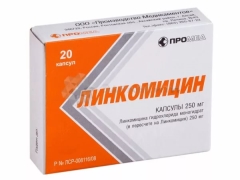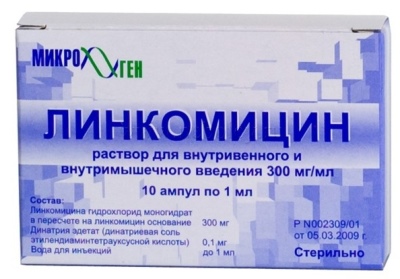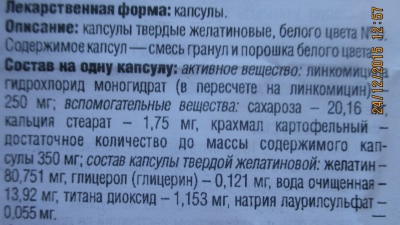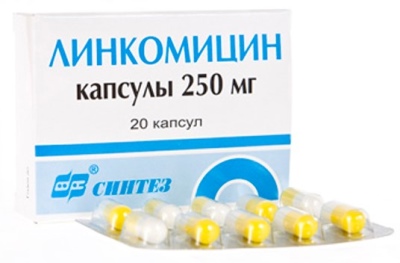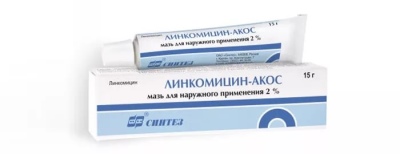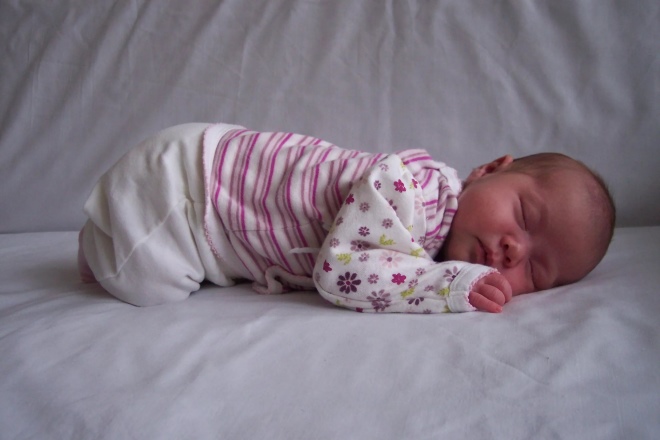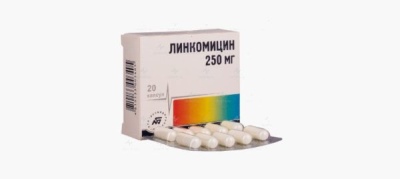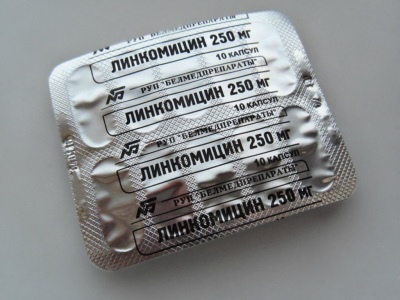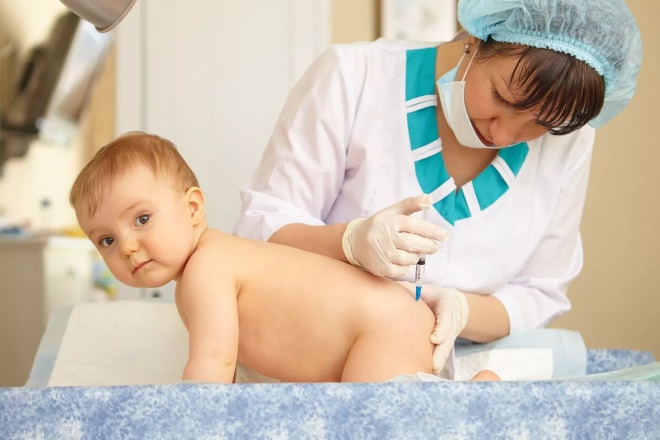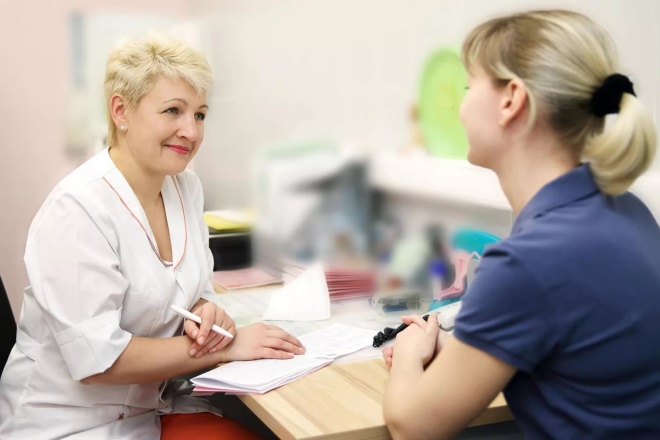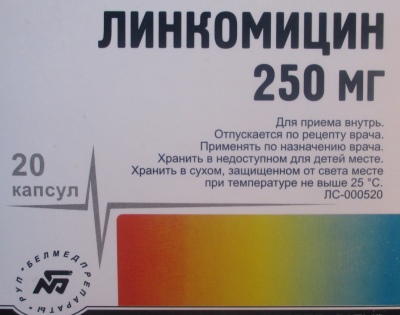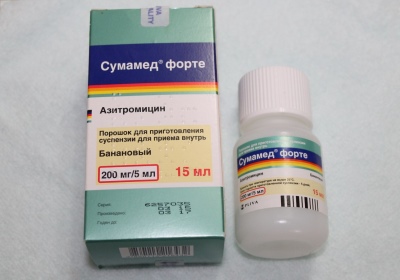Lincomycin for children
Lincomycin can be called an antibiotic, which has long established itself in the treatment of various purulent processes in adults. But is it used in children and how does such a drug affect the child’s body and bacteria?
Release form and composition
Lincomycin is produced:
- in capsules that are sold for 20 pieces in one pack;
- in ampoules containing 1 or 2 ml of a solution that is injected into a muscle or a vein;
- in the form of ointment, packaged in tubes of 10 or 15 g
The basis of any form of the drug is lincomycin hydrochloride. In one capsule it is contained in a dose of 250 mg, in 1 ml of the solution for injections - 300 mg, and in 1 gram of ointment - in a dosage of 20 mg.
Operating principle
The drug is referred to as antibiotics, lincosamides, receive its actinomycetes. Once in the patient's body, its active ingredient penetrates into the microbial cells and binds to the ribosomes, resulting in direct intervention in the synthesis of peptides, which disrupts the formation of proteins. This leads to inhibition of the growth of bacteria and their development (this effect is called bacteriostatic), and high doses of drugs can destroy microorganisms (have a bactericidal effect).
The drug is effective in infecting:
- staphylococcus;
- the causative agent of diphtheria;
- clostridia;
- streptococci;
- mycoplasmas;
- bacteroids.
Microbes that are not affected by penicillins and other common antibiotics are often susceptible to this medication. However, with regard to enterococci, corynebacteria, neisseria, fungi, protozoa, anaerobic bacteria and viruses, lincomycin is usually helpless.
Indications
Lincomycin is used for infections caused by bacteria that are susceptible to this drug:
- with purulent otitis;
- face;
- pneumonia;
- boils;
- lung abscess;
- angina;
- phlegmonte;
- osteomyelitis;
- wound infection;
- endocarditis;
- purulent arthritis;
- suppuration after tooth extraction.
If a child has purulent rhinitis or sinusitis, then lincomycin may be included in complex nose drops.
From what age is prescribed?
All forms of Lincomycin are contraindicated in newborn babies. The drug is prescribed to children who are 1 month old. In this case, prior to treatment, a sensitivity determination is recommended so that the antibiotic really helps the little patient.
Contraindications
Lincomycin is not prescribed in any form:
- with intolerance to any ingredient of the drug;
- if you are allergic to clindamycin;
- with severe renal or hepatic insufficiency.
If a child has a fungal infection of the mucous membranes or skin, use the medication with caution.
Side effects
The use of Lincomycin can provoke such negative symptoms of the gastrointestinal tract as nausea, inflammation of the tongue, dilution of stool, vomiting, abdominal pain and others. In addition, the drug sometimes causes an allergic reaction and a decrease in the number of blood cells. With injections may develop phlebitis.
Instructions for use
The necessary form of Lincomycin should be selected by the doctor, taking into account the course of the disease. The dosage of the drug in children is calculated by weight. For capsules, it ranges from 30 to 60 mg of active compound per 1 kg of body weight of a patient aged less than 14 years per day.
For intravenous drip injections per 1 kg of weight of the child take from 10 to 20 mg of lincomycin. The calculated dose of the drug is administered every 8-12 hours. If you use an ointment, then this tool lubricates the affected skin. The drug is applied in a thin layer.
Drug interaction
Lincomycin is not used with antibiotics that have a bactericidal effect (ampicillin, chloramphenicol, etc.), but can be prescribed together with aminoglycosides, because it enhances their action. When taking antidiarrheal drugs, the effect of Lincomycin is reduced.
Terms of sale and storage
Any form of Lincomycin is a prescription drug, therefore it is sold in pharmacies only by prescription from a pediatrician, pulmonologist, LOR, or other specialist. The average price of 20 capsules is 80 rubles, and 10 ampoules - 190 rubles. It is recommended to store drugs at home in a dry place at room temperature. The shelf life of the ointment is 2 years, other forms - 3 years.
Reviews
About the treatment of children Lincomycin can be found a lot of good reviews. Despite many years of using such an antibiotic, it effectively copes with many purulent infections. In addition, the drug is allowed for children up to a year (with the exception of infants of the first month of life) and is inexpensive.
The main disadvantage of Lincomycin parents call it a negative effect on the digestive tract. Because of this, the medication must be taken along with probiotics.
Analogs
Other antibacterial drugs may replace Lincomycin, for example, "Klacid", "Sumamed", "Azitroks", "Ospamox" or Clindamycin. However, all these antibiotics contain different active ingredients and have their limitations, therefore, to give any of these means to a child without consulting a doctor is impossible.
About how you can use the drug "Lincomycin", tells in detail the surgeon, MD, Victor Kosovan.
